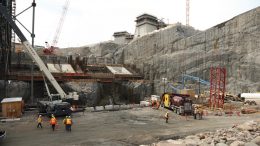Is renewable energy always sustainable — or just? Today we continue our series looking at the role of Canadian hydropower in helping the U.S. states meet their climate goals.
In 1999 a cheering crowd watched as a backhoe breached a hydroelectric dam on Maine’s Kennebec River. The effort to help restore native fish populations and the river’s health was hailed as a success and ignited a nationwide movement that spurred 1,200 dam removals in two decades.
The era of building large dams in the United States, which defined so much of the 20th century, is over. The prime spots for development were cemented decades ago, and the ensuing harm to fish and other wildlife has been well documented. Attention is now focused on removing obsolete dams and retrofitting existing hydroelectric dams to reduce ecological harm and increase energy efficiency.
Many other countries are in the same boat. Across Europe and North America “big dams stopped being built in developed nations because the best sites for dams were already developed, and environmental and social concerns made the costs unacceptable,” found a 2018 study in the Proceedings of the National Academy of Sciences.
Canada appears to be the exception to that.
Large dams are still being built across Canada, from Muskrat Falls in Labrador to the generically titled “Site C” in British Columbia, despite cost overruns, outcry from some First Nations and even environmental concerns from the United Nations.
Hydroelectric power already supplies 60% of the country’s energy. But the dam building isn’t just to feed Canada’s power needs. It’s also become a hot export commodity.
As U.S. states look to meet new clean energy targets, imported low-carbon hydropower from across the northern border has become a larger part of the conversation — and the grid. New England already gets 17% of its energy from Canadian hydropower, Midwest states around 12% and New York 5%.
That number is likely to jump.
A new transmission project to bring 250 megawatts of Canadian hydropower to the United States just came online in Minnesota. Two more are in the works for Massachusetts and New York.
Proponents say we need large-scale hydro to grease the wheels of the clean energy transition. Others caution that it comes with a larger environmental cost compared to wind and solar and could open the floodgates for more dam building.
There’s one shared bit of common ground, though: We need to act quickly and wisely to tackle the climate crisis.
“This is the decade for getting 50% of the way there on renewables, but also proving out the pathway to get to net-zero by mid-century, if not before,” says Peter Rothstein, president of the Northeast Clean Energy Council.
How hydro figures into that process is still a complicated issue.
Clean Energy Demand Surges
The Northeast is one place where the energy transition is off and running.
All six New England states have pledged to cut greenhouse gas emissions 80% over 1990 levels by 2050, and some are aiming higher.
Neighboring New York is also keeping pace. Last year the Empire State committed to achieving an 85% reduction in greenhouse gas emissions by 2050 and 70% renewable electricity by 2030.
How will those goals be achieved?
For some, imported Canadian hydropower looks poised to play a big role, and two new projects appear close to breaking ground.
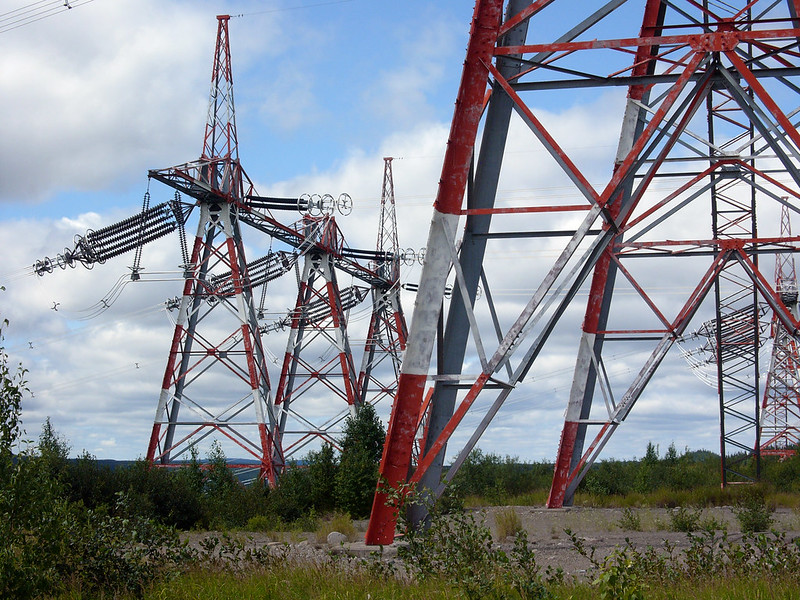
Champlain Hudson Power Express, a 330-mile-long transmission line, would deliver 1,000 megawatts of hydropower from Quebec to the New York metro area and could supply about a million homes — helping to reduce dependence on fossil fuels.
The project — a joint venture of the province-run Hydro-Québec and Transmission Developers Inc., a subsidiary of the private equity firm Blackstone Group — has already received the necessary permits for construction, but no contracts for the power have been signed.
Construction, however, could still start next year, with the project scheduled to come online in 2025.
Massachusetts has an even bigger project in the works. New England Clean Energy Connect would bring 1,500 megawatts of capacity through a 145-mile-long transmission line running through Maine from Canada to Massachusetts. It too would come from Hydro-Québec, this time working in conjunction with Central Maine Power.
The project, which is projected to cut greenhouse gas emissions by 3 million tons a year in New England, has received its necessary permits from the state of Maine but still awaits federal permits from the Department of Energy and the Army Corps of Engineers.
Opposition groups, including some environmental organizations, are also challenging various aspects of the project in court. And a coalition of First Nations communities that have seen dams built on their ancestral lands have voiced their opposition. (You can read more about that transmission line in Part I of this series.)
More could be on the way. Nalcor Energy — the province-run hydro company of Newfoundland and Labrador — is nearing completion on its 824-megawatt Muskrat Falls hydro project on the Churchill (or Grand) River. Costs have just surpassed $13 billion — twice what was first estimated.
Some of the energy is already slated to be sent to other parts of Canada and then — hopefully, according to Nalcor — to New England.
Environmental Considerations
What’s the net impact of these planned projects? That’s hard to say. Tallying the environmental benefit or harm from large-scale hydro is complicated.
One of the biggest metrics of assessing environmental impact is greenhouse gas emissions.
The first phase of emissions comes just from building its infrastructure. Large-scale hydropower involves the construction of generating stations, and often accompanying dams and reservoirs. And then there are hundreds of miles of transmission lines that need to be constructed to move that power.
What comes next, once a project comes online, depends on multiple factors. Research has shown that hydropower emissions vary widely based on the location, climate and area of land flooded. Hydro emissions are also highest when a reservoir is first flooded and then decrease in the following years.
All told, over the life cycle of a project, most hydropower is cleaner than fossil fuels, although not always as clean as wind and solar. A study in Nature Energy on the projected life-cycle emissions of energy sources put solar at 6 grams of CO2 equivalent per kilowatt hour and wind at 4. The researchers estimated typical hydro at 97, but there’s great variation between sites.
A 2014 report prepared by the research group CIRAIG on behalf of Hydro-Québec found the average life-cycle emissions of the company’s fleet of 62 generation stations was between 6 and 17 grams of CO2 equivalent per kilowatt hour.
Alain Tremblay, Hydro-Québec’s lead scientist on greenhouse gas emissions, says tracking from their most recent complex of dams on the Romaine River shows emissions between 5 and 10 grams of CO2 equivalent per kilowatt hour.
There are other environmental considerations beyond greenhouse gas emissions.
The nonprofit Natural Resources Council of Maine opposes the New England Clean Energy Connect, in part out of concern about fragmented habitat and critical wildlife populations, including brook trout. The transmission line would require clearing a 53-mile stretch of forest through the North Maine Woods.
In New York the nonprofit Riverkeeper reversed its earlier support for the Champlain Hudson Power Express and has now come out against that project, which would send its electrical cable down the length of the Hudson River.
“This sets a precedent that the Hudson is a conduit for extension cords from Canada or from anywhere,” says John Lipscomb, Riverkeeper’s vice president of advocacy. “It should be off limits to that kind of thing.”
The Hudson contains legacy pollution from polychlorinated biphenyls (PCBs) dumped decades ago and other contaminants that could be turned up as the cable is dug in the riverbed. Over the years some of that pollution has been remediated, but not all. And plans to avoid putting cable in the areas of the worst-known contamination aren’t sufficient to protect the ecosystem, he says.
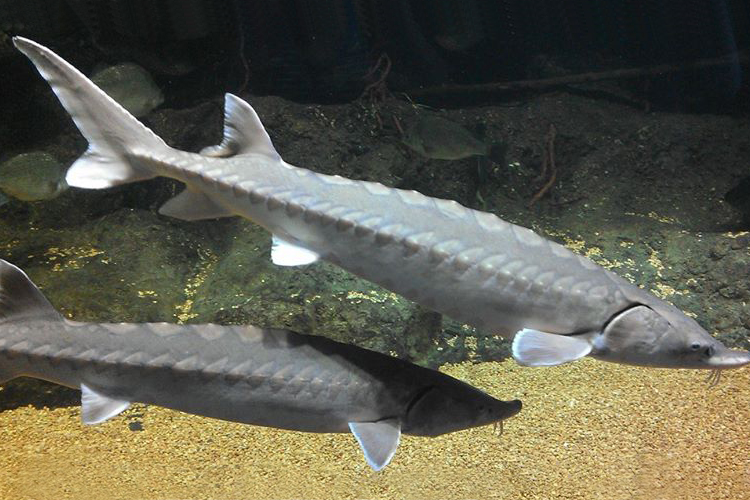
There’s also concern that imperiled fish species, like endangered shortnose sturgeon and Atlantic sturgeon, could be harmed by the electrical cable. The river was designated as critical habitat for Atlantic sturgeon, but no Endangered Species Act review has been initiated to assess if the cable could threaten fish populations.
“Both of these fishes have nervous systems similar to that of sharks, which are incredibly sensitive to electric signals,” says Roger Downs, conservation director of the Sierra Club Atlantic Chapter. “It’s a huge experiment to suddenly put an electrical signal down the backbone of this river.”
Lipscomb shares this concern. After all the work that’s been done in recent years to help restore the Hudson and its estuary, he says “it’s heartbreaking that we still think of this river as a resource.”
Hydropower may be renewable, he says, but from an environmental perspective it isn’t sustainable. “Unless a river’s value is zero,” he says. “If a river has any value as an ecosystem, as a host for life, then hydropower isn’t even a consideration.”
Upstream Justice Concerns
In 1990 a group of Cree and Inuit protestors paddled the Hudson River to Manhattan to ask New Yorkers to oppose a power purchase agreement between the state and Quebec and the construction of a second dam in the James Bay hydroelectric project in northern Quebec.
They were successful. Now, 30 years later, a different group of First Nations is making a similar plea.
On October 7 the First Nations of Pessamit, Wemotaci, Pikogan, Lac Simon and Kitcisakik sent a letter to the U.S. Department of Energy stating their opposition to the Massachusetts transmission line. The groups wrote that one-third of Hydro-Québec’s installed power is “produced in our respective ancestral territories from reservoirs, dams, power plants and various other installations, without prior consultation, without our consent and without compensation.”
Over the decades of hydropower buildout in Canada many First Nations communities — but not all — have been consulted on projects and struck agreements with power companies.
Major hydroelectric projects have altered the flow of rivers and in some cases, the food and cultural resources used by Indigenous communities.
There are also health concerns.
A 2016 study by Harvard University researchers, published in Environmental Science and Technology, found that flooding reservoirs for hydroelectric projects in Canada would increase the risk of mercury poisoning in Indigenous communities at 90% of the dam sites.
When land is flooded for a reservoir, the microbes in the soil convert naturally occurring mercury into more dangerous methylmercury, which then works its way up the food chain. That puts anyone who relies on local wildlife such as fish, birds and seals at risk. In the northern reaches of Canada, that’s largely Indigenous people.
The researchers looked at how three Inuit communities downstream of Nalcor’s Muskrat Falls project would fare. And they found that, on average, risk of exposure for community members would double after the area was flooded. That could translate to higher risks for cardiovascular disease and neurodevelopmental delays for children.
The more people rely on local food sources, the more harm they’re exposed to. And in this remote region where store-bought food is very expensive, that’s a serious concern.
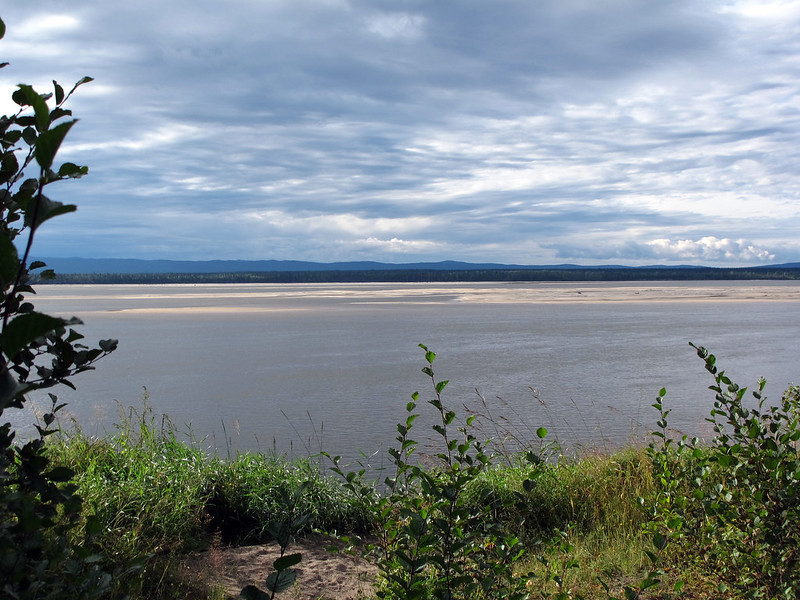
“People have a very high prevalence of economic insecurity and that translates into insecure access to Western foods at the grocery store,” says Ryan Calder, a co-author of the study and now an assistant professor of environmental health and policy at Virginia Tech. “Traditional food systems account for a smaller and smaller fraction of overall calories, but a wildly disproportionate fraction of nutrient intake.”
Despite this, he doesn’t think their research should be taken as a commentary on whether hydroelectric power itself is good or bad. “We really just criticized [the company’s] risk assessment,” he says.
Earlier studies by Nalcor claimed the effect on the Inuit would be negligible as the mercury would quickly dilute in downstream waters.
“They had no basis for saying there was going to be no impact,” says Calder. “It was clear that they were trying to ignore their obligations — if not legal, then certainly moral — to Indigenous people.”
The researchers also found that about half of the other sites they studied would have equal or greater concentrations of methylmercury than Muskrat Falls.
Roberta Frampton Benefiel of Grand Riverkeeper Labrador, who lives near the Muskrat Falls project, says she wasn’t surprised by Nalcor’s position. “Aboriginal people don’t count to this government and so we have to make the Aboriginal people count,” she says.
She has spoken to environmental organizations in the United States to help raise awareness about some of the local effects of dam development in Canada.
“I want people in the United States to understand that when they flip their light switch, if they accept these power lines from Canada, they’re poisoning northern communities,” she says.
More Dams?
New York and Massachusetts have been eager for hydropower from Canada as long as it doesn’t mean the construction of new dams for the transmission projects.
Hydro-Québec says it has enough reserves for export to New York and Massachusetts without redirecting power from its existing United States or Canadian customers.
It’s nearly finished with the last dam in the complex of four generating stations on the Romaine River, which along with other projects, has added 5,000 megawatts of capacity over the last decade. Although it does has the lowest reserve margin of utilities in the region, according to the North American Electric Reliability Corporation’s 2019 assessment.
In previous years Hydro-Québec did preliminary work to explore the possibility of new dams on the Little Mécatina River, but company spokesperson Lynn St-Laurent says they currently have no plans for new dams and that project is no longer in their strategic plan.
Gary Sutherland, director of strategic affairs for northeast markets at Hydro-Québec, says that additional energy demand for export could be met with increased energy efficiency in Quebec and more wind projects. Quebec Premier François Legault tweeted last week that the province’s next addition of capacity, if needed, would be the 200-megawatt Apuiat wind farm.
Elsewhere in Canada, however, dam building continues.
Manitoba Hydro and four First Nations are in the process of building the Keeyask project, a 695-megawatt hydroelectric generating station on the Nelson River.
British Columbia also continues to muddle along on development at Site C, a 1,100-megawatt dam on the Peace River that has faced mounting problems and protests.
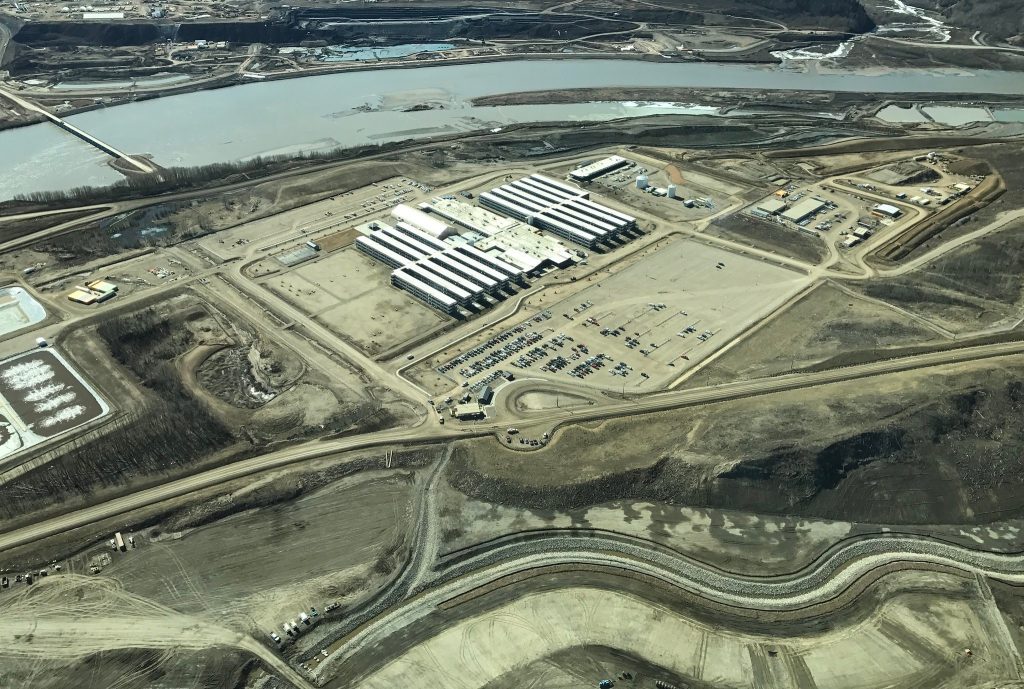
This includes, according to a report in The Narwhal, legal challenges from “landowners and First Nations who oppose flooding 128 kilometers of the Peace River and its tributaries, putting Indigenous burial grounds, traditional hunting and fishing areas, habitat for more than 100 species vulnerable to extinction and some of Canada’s richest farmland under up to 50 meters of water.”
Construction has also uncovered geological issues that could make parts of the foundation unstable, prompting numerous calls to stop development.
New research by energy analyst Robert McCullough, who runs a Portland, Oregon-based consulting firm, found that if the project continues its likely to have surplus energy that will need to be sold outside the province at a loss to ratepayers.
But a poor financial outlook doesn’t always mean the end of dam projects in Canada.
In Labrador Nalcor also has another large project planned — the 2,250-megawatt Gull Island dam, farther upstream from Muskrat Falls, which could be built if there’s a buyer for the power.
It’s a prospect Benefiel finds shocking, considering the company’s most recent project was so over budget that it prompted a provincial Commission of Inquiry, which found that Muskrat Falls put the financial health of the entire province at risk.
Is Hydro Needed?
Considering all the complexities of hydro projects and the related transmission infrastructure, is it necessary to move U.S. states off fossil fuels and toward clean energy goals?
That depends on who you talk to.
Despite investment in wind and solar, “hydro has a couple of things going for it,” says Rothstein of the Northeast Clean Energy Council. The first is that it’s able to compete on costs, and second is the “dispatchability.”
Thanks to decades of dam building, Canadian hydropower is ready to go — pending transmission capacity. It’s also seen as less variable than wind and solar, although hydropower does fluctuate by season and by year, depending on precipitation.
“I think hydro will play a role, but it’s not going to be the only resource,” says Rothstein. Offshore wind holds the biggest potential for large-scale projects in the region, he says.
New York has already awarded contracts to procure 1,700 megawatts of offshore wind and in July put out a call to solicit another 2,500 megawatts of offshore wind and 1,500 megawatts of land-based, large-scale renewables.
Massachusetts is making strides toward wind energy, too. In 2016 Gov. Charlie Baker signed an energy bill requiring the state’s utilities to procure 1,600 megawatts of offshore wind and could soon double that.
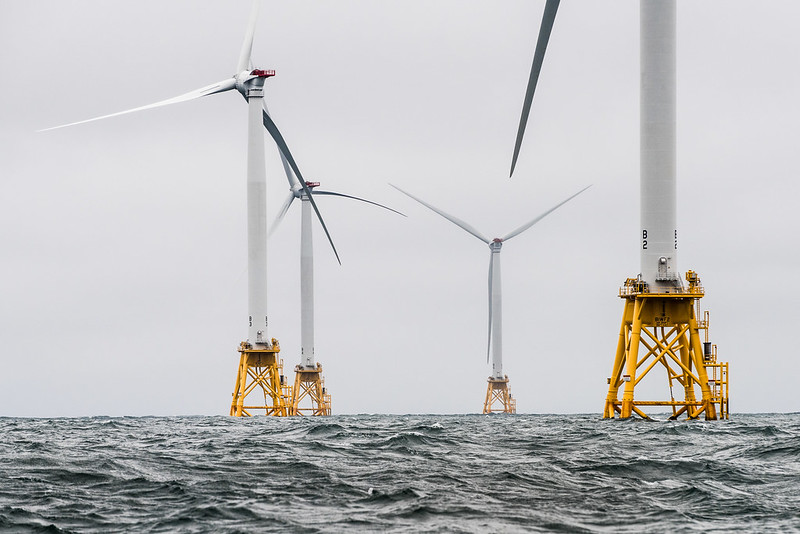
All told around a half a dozen major projects now await a green light, pending permitting decisions by the federal Bureau of Ocean Energy Management.
All down the East Coast, “there’s a whole constellation of projects close to breaking water,” says Rothstein.
In the past offshore wind has been stymied by NIMBYism, but he says both the public perception of wind has changed and so have costs. New projects being proposed are farther offshore and out of view. And more established, global wind developers are competing for projects, helping to bring down prices.
Sierra Club’s Downs thinks northeast states could meet their goals without imported hydro. Instead he’d like to see more focus on large-scale solar installations in upstate New York on brownfields or fallow farmland, and more offshore wind.
“And then we need to be doing more and more programs for smaller, community-based wind and solar,” he says.
Whatever mix of low-carbon power is secured, Downs hopes it doesn’t turn rivers into transmission corridors and does account for the full environmental and social costs of power generation.
“We have an obligation to protect cultural rights, Indigenous rights and also the vast Canadian wilderness,” says Downs. “We shouldn’t be exporting our environmental problems.”
![]()

